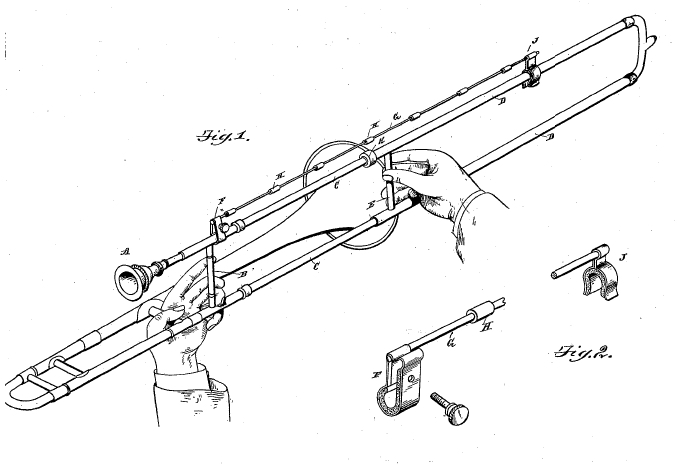US patents, including associated diagrams and images, are in the public domain. Today I added the below captions and images from US patents to the Trombone History Timeline (19th century—2nd half, and 20th century). More to come!
1894—Detroit, Michigan: Joseph L. De Good files a patent for a “trombone-gage.” In his words, “I have devised what I have termed a ‘position indicator,’ which is attached to the fixed and sliding tubes having indices thereon by which the end of the sliding tube can be readily adjusted” (De Good) (see below image; public domain).
1921—Laporte, Indiana: Ernst Couturier receives a patent for a trombone, “whereby, to the greatest extent possible, the bore of the instrument is continuously and gradually increased in diameter in the direction of travel of the sound vibrations; in other words, I aim to reduce to a minimum the length of cylindrical tubing in the instrument…” (Couturier) (see below image; public domain).
1950—Brooklyn, New York: Trombonist Davis Shuman files a patent for a trombone in which he “inclin[es] the telescopic sections and the slide of the trombone at an angle to the axis of the bell and mouthpiece so that the slide can be moved at an angle to avoid striking a person in front of the trombonist without the necessity of directing the bell away from the audience. Inclining the slide also improves the balance of the instrument since, in normal playing position, the horizontal extension of the slide is not as great as in the conventional trombone and the arm movement is easier and more natural” (Shuman) (see below image; public domain).